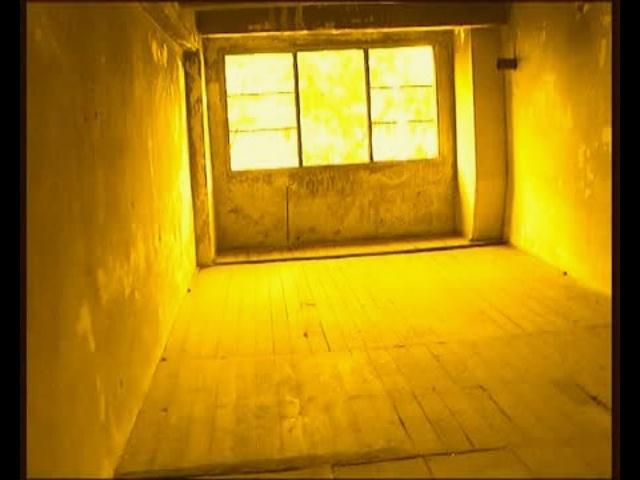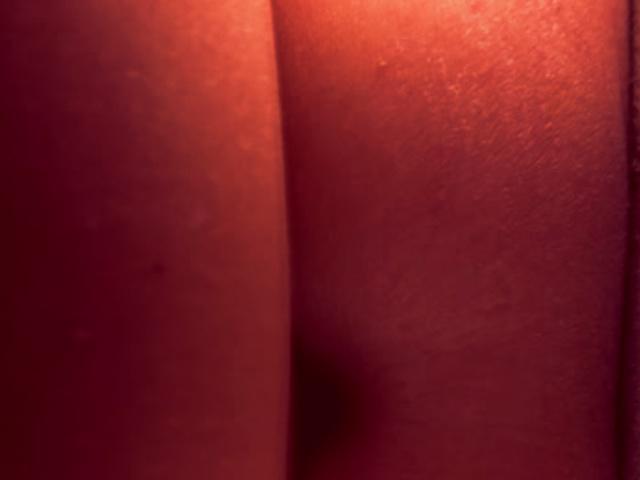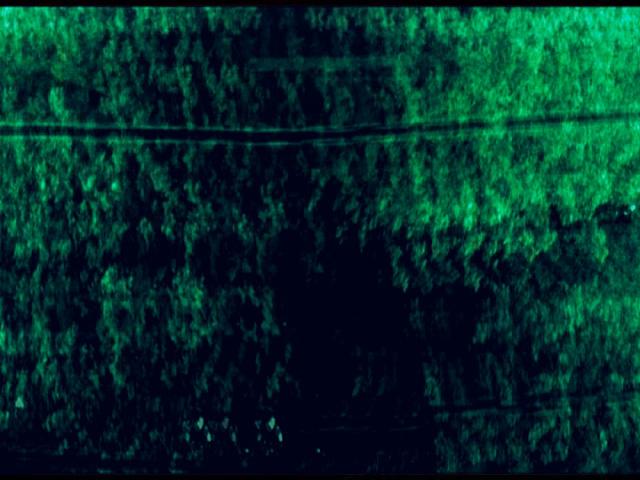FAREWELL TO HELL
In Sabine Marte’s cabinet of ambiguous horrors, ghostly voices whisper, images surrender to the digital cadre fibrillation, bodies waft. The game with (genre) codes lets the filmmaker and film space merge to a single symbiotic performer.
(Diagonale Catalog, 2015)
How did we get in here? All at once (in a flash pan), we´re asked in with an inviting gesture. Into an empty sun-bathed room haunted by ghostly voices. The picture trembles, the voices jump slightly. A naked body with a reddish tinge breathes, folds and unfolds, filling the picture. A spotty, greenish-black pattern resembles a boil. In a gloomy hallway we peep around a corner — into a space that doesn´t offer a way out. And who has the last laugh now?
In 1999 the film, language and performance artist Sabine Marte made a video expressing the intention I Would Like to Make a Horror Movie Sometime. Her latest work also makes references to this classic genre: In its title, images, harsh sounds and voiceover narration, FAREWELL TO HELL plays with suggestions of characteristic motifs. Possibly a haunted house. An unidentifiable body in which there seems to be some activity. The woman who was there twice. "She knows very well how to act in a horror film."
This doesn´t produce a self-contained narrative, as the film also makes use of those characteristic features of a horror film involving narrowing of the field of view, instability and ambiguousness of the images, and the possibility of charging and reinterpreting them. A few visual motifs recur several times, gradually develop a dynamism and dramatically intrude upon one another, and they´re literally ascribed an interpretation. But because language too can involve ambivalence, one question remains open until the end: "Did something just happen or not?"
(Isabella Reicher)
Translation: Steve Wilder
FAREWELL TO HELL
2014
Austria
7 min



